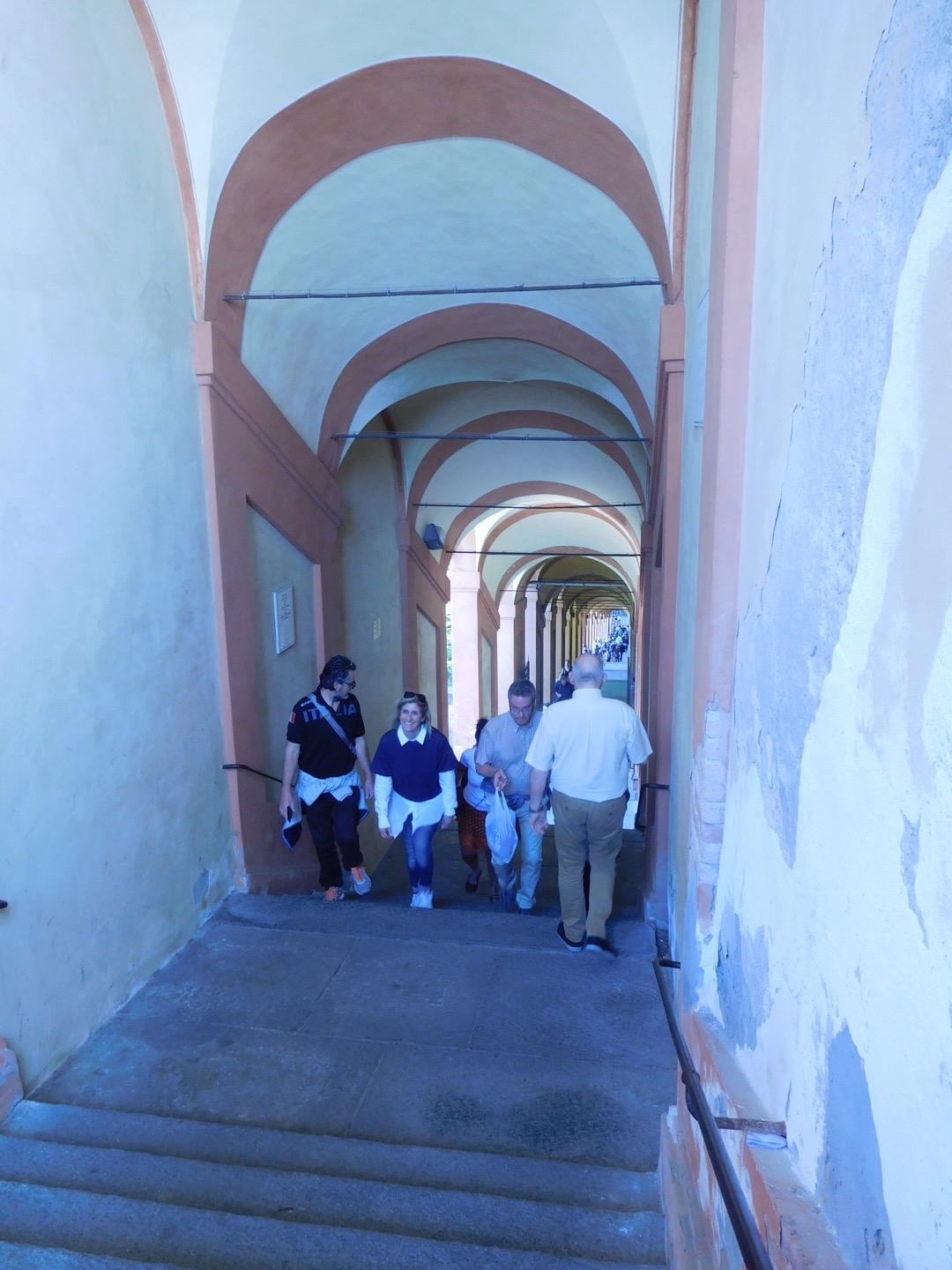I Portici di Bologna
Portico - the word is the same in Italian and English; portici is the Italian plural. The dictionary definition, "a porch or walkway with a roof supported by columns" (thefreedictionary.com), does not begin to describe the grandeur of Bologna's portico-lined walkways.
Bologna's earliest porticos date to the 11th century (with modifications and additions in later centuries) and are found throughout the historic center of town. They are as practical as they are beautiful. Originally, they allowed for additional living space to be built on upper floors, an important housing consideration in a town with a large student population. This was accomplished by extending living space above the areas used by the people passing underneath, creating both living space and covered walkways. The ceilings of the porticos are quite high - legend has it that they are a standard height, designed to accommodate a man on horseback.
The porticos open to the streets through a series of arches.
Some of the earliest porticos were made of wooden beams and coverings, later banned and mostly removed. Today the porticos have brick or stone columns, arched openings, vaulted ceilings, and stone or marble pavements. As an additional practicality, the porticos offer protection from both rain and direct sun, making the streets of Bologna perhaps the most pleasant place to stroll in all of Europe.
This length of portico has beautiful columns and ceilings as well as marble flooring.
There are 38 kilometers (nearly 24 miles) of porticos in the historic center of Bologna, beneath which are a variety of shops, markets, cafes, and restaurants.
Under the portico along Via Ugo Bassi.
A pretty flower market under the portico.
The charming cafe Gamerini sits under a pretty stretch of portico along Via Ugo Bassi and Via S. Gervasio
A morning coffee or an afternoon tea at a cafe sotto il portico (beneath the portico) is a real treat!
Outside of the historic center is perhaps the most remarkable of all the porticos - the world's longest covered walkway, which leads to the Santuario di San Luca. This four-kilometer (roughly 2.5 miles) uphill portico has a total of 666 arches. It begins with a gentle rise from the Porta Saragozza and becomes progressively steeper as it climbs the hill toward the church. A massive and costly undertaking when it was built (late 1600s - mid 1700s), the arches were funded privately, many by families who built small shrines or chapels along the walkway (most now destroyed, only a few remain). Completing this walk really is a pilgrimage - and beautiful views and a lovely church await at the top (it's also possible to drive to the Santuario or take a tourist bus).
The all uphill portico leading to the Santuario di San Luca, Bologna.
The Santuario end of the portal is un'ascesa ripida (a steep climb)!
Bologna is a beautiful city, full of architectural, cultural, historic, and artistic interest. It's also a very walkable city - made all the more pleasant when strolling underneath i portici di Bologna.
-post by JMB








